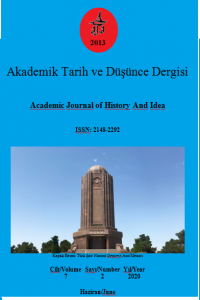بحثی در زیبایی شناسی زبان آثار عرفانی فارسی
زبان، عنصر جداییناپذیر آثار مکتوب است؛ بنابراین بررسی آثار عرفانی از لحاظ نحوۀ استفاده از زبان ادبی، برای شناخت میزان ادبیت آنها ضروری است. برای این مهم، باید تعریف درستی از ادبیات ارائه دهیم سپس با معیارهای آن، آثار را بررسی کنیم. ادبیات در این مقاله، بهمنزلۀ سخنی است که زیباست، بهطور سازمانیافته، از گفتار متداول، متفاوت و ناآشنا است و عاطفۀ خواننده یا شنونده را برانگیخته میکند. در این نوشتار، ابتدا با تعریف ارائه شده از ادبیات، برخی از آثار عرفانی زبان فارسی در قرن پنج و شش هجری بررسی شده است؛ سپس بر اساس علم بلاغت و علوم بیان و بدیع، میزان بهره مندی این آثار از ادبیت، تعیین شده سپس آثار عرفانی به بخش های مختلف تقسیم خواهد شد. تفاوتهای آشکاری میان زبان آثار عرفانی وجود دارد. هدف برخی آثار، فقط انتقال معنا است و در حد کارکرد مکانیکی زبان متوقفشدهاند. چنین آثاری بهرهای از ادبیت زبان ندارند. بنابراین وارد جنبههای زیبایی زبانی نشدهاند و عاطفۀ خواننده را برنمیانگیزند. در مقابل، هدف اولیۀ برخی آثار، ایجاد حس زیبایی و لذت در خواننده است؛ هرچند که هدف ثانویهشان، انتقال معنا نیز است؛ جنبههای ادبی این آثار در اوج خود قرار دارد و حتی برخی آثار مانند مناجاتنامۀ خواجه عبدالله انصاری، به شعر بسیار نزدیک میشود؛ تا جایی که میتوان گفت این آثار، شعر منثور هستند. برخی از آثار هم حدفاصل این دو شیوه قرار دارند، گاه زبانشان ادبی است و گاه خالی از زیباییهای زبانی. بنابراین با این دیدگاه، سه نوع اثر عرفانی خواهیم داشت: اثر عرفانی محض، اثر عرفانیِ ادبی و اثر بینابین.
A discussion on the aesthetics of the language of Persian mystical works
Language is an integral element of written works, therefore, the study of mystical works in terms of how they use literary language is necessary to understand the extent of their literariness. To this end, we need to give a proper definition of the literature and then review the literature with its criteria. Literature in this essay is a speech that is beautiful, organized, different from mainstream speech, different and unfamiliar and arouses the reader or listener's emotions. In this article, first, with the defined definition of literature, some mystical works of Persian language in the fifth and sixth centuries AH have been studied, Then, based on rhetoric and rhetorical sciences, the extent to which these works benefit from literature is determined, then mystical works will be divided into different sections. There are obvious differences between the languages of mystical works. The purpose of some works is to convey meaning only, and to have ceased to the mechanical function of the language. Such works do not benefit from language literature. So they do not go into the aesthetic aspects of the language and do not excite the emotions of the reader. In contrast, the primary purpose of some works is to create a sense of beauty and delight in the reader, although their secondary purpose is to convey meaning; The literary aspects of these works are at their peak, and even some works, such as Khwajeh Abdullah Ansari’s Mounaajaat nameh come very close to poetry; As far as we can tell, these are prose poetry. Some of the works are intertwined, sometimes their language is literary and sometimes devoid of linguistic beauties. So with this perspective, we will have three types of mystical work: pure mystical work, literary mystic work, and intermediate work.
___
- SAJJADI, S. Z., Moghaddame bar mabāni-e erfān va tasavvof, samt, Tehran, 1387.
- SAMANI, A., Rawh-ul- arvāh fi asmā-il- makik-il- fattāh, elmi va farhangi, Tehran, 1384.
- SARTRE, J.-P., Adabiāt chist, niloofar, Tehran, 1388.
- SHAFIEI KADKANI, M. R., Zabān-e she’r dar nasr-e soufieh, sokhan, Tehran, 1392.
- ZARRINKOOB, A., Arzesh-e mirās-e soufieh, Amir kabir, Tehran, 1387.
- ________________________________, Naghd-e adabi, Amirkabir, Tehran, 1361.
